
New York City last week released a preliminary map showing the proposed sites for the launch of its bike sharing scheme, now named Citi Bike (with Citigroup being the lead sponsor along with Mastercard).
 Citigroup’s sponsorship is crucial for the scheme, which has promised no public subsidy on at least operating costs, and is a rather convenient sponsor in terms of its name. In several other cities around the world, their bike share schemes are known as City Bikes, such as Stockholm and Vienna, so Citi Bike has a good chance of becoming the “on the street” name for the scheme, unlike the unwieldy “Barclays Cycle Hire” name we have here in London – most people here know them as the snappier, if politically incorrect “Boris Bikes”.
Citigroup’s sponsorship is crucial for the scheme, which has promised no public subsidy on at least operating costs, and is a rather convenient sponsor in terms of its name. In several other cities around the world, their bike share schemes are known as City Bikes, such as Stockholm and Vienna, so Citi Bike has a good chance of becoming the “on the street” name for the scheme, unlike the unwieldy “Barclays Cycle Hire” name we have here in London – most people here know them as the snappier, if politically incorrect “Boris Bikes”.
NYC’s scheme is clearly influenced by London’s – its of a similar size, it has a big sponsor from financial services and a mayor fully behind it, and a Boris Bike from London even appears on the front cover of the NYC DOT presentation to communities. The technology used is the same and the bikes are also the same design.
I’ve extracted the data from the official map and added it to my own set of maps for 50+ bike share cities across the world allowing for a direct comparison between the scheme and the existing ones. The initial map has 413 stands – the districts either side of Central Park are missing, as is central Brooklyn, as these areas are still undergoing consultation and will gain coverage next year. The scheme should be opening this summer and is then due to expand by 50% by Autumn 2013.
The stand sizes and descriptions are also from the official map, and I’ve simulated the empty/full status of each stand, based on the distance from Wall Street and random perturbation. This results in just under 7000 bikes, based on a roughly 1:1 empty to occupied stand ratio, which is fairly standard around the world.
New York vs London
|
New York |
London |
| System Name |
Citi Bikes |
Barclays Cycle Hire |
| Bicycle design |
Devinci/PBSC |
Devinci/PBSC |
| Operator |
Alta Bicycle Share |
Serco |
| Lead sponsor deal |
$41m over 5 years |
£25m ($40m) over 5 years |
| Bikes (at launch) |
7000* |
4200 |
| Docks (at launch) |
13639 |
7685 |
| Stations (at launch) |
413 |
345 |
| Largest station size |
128 |
126 |
| Average station size |
33 |
19 |
| Ratio bike:docks |
1:1.95 |
1:1.83 |
| System footprint (at launch) |
53 km2 |
42 km2 |
| Annual membership |
$95 |
£45 ($72) |
| 24 hour membership |
$4 |
£1 ($1.60) |
| Max free journey time (24h mmbr) |
30 minutes |
30 minutes |
| Max free journey time (annual mmbr) |
45 minutes |
30 minutes |
| Single metro journey (smartcard) |
$2.25 |
£2** ($3.20) |
| Single metro journey (cash) |
$2.50 |
£4.30 ($6.90) |
* Announced figure. Actual figure may be less due to bikes in maintenance and temporary storage. London’s equivalent figure was 6000 bikes. ** Zone 1 only. Cost higher if travelling to Zone 2 (which has bike share bikes in it). Cost lower if only in Zone 2.
What stands out for me, when comparing New York‘s and London‘s bike share schemes, which are roughly similar in terms of number of bikes and stands, is that NY’s footprint is similar in size to London’s at launch , but with many more bikes, and the scheme is accordingly more dense. Certainly, New York will have the critical mass of stand locations, so allow the scheme to work efficiently – you’ll never have to travel very far, if your destination stand is full, to find another one.
The other thing that strikes me is that all the stands are quite big – very few of them have less than 20 docks. The biggest, on Pershing Square (by Grand Central Station) has 128 docks – this is ever so slightly larger than our own “superdock” at Waterloo Station and presumably designed with a similar purpose of satisfying the commuter “tide”. The other big commuter station in NYC, Penn Station, has three large docks surrounding it. The coverage is also fairly uniform, my only surprise is that there are only two docks in Battery City, which is surely full of people likely to use the scheme – or perhaps they just walk to work? Also there are none in Central Park – although perhaps these will be included in the Upper East/Upper West areas for next year’s expansion?
One big difference is the fee structure – at $10 a day but only $95 a year, this suggests that tourists and public-transport-based commuters are the target users, rather than local residents and errand users. This is a pity – the latter group tends have more heterogenous usage flows and help “mix” the scheme up and redistribute it organically, requiring less redistribution of bikes trucks by the operator.
$10 is four times more than the cost of the New York subway ($2.50/trip with Metrocard) so you would need to do at least four journeys a day to save money. In London, our tube in Zone 1 is £2 per journey with Oystercard) or £1 a day on the Boris Bikes. So end up often using the latter simply on cost, even for one journey. The over-30-minute journey extra cost is also significantly more – $4 compared with £1 here. Subscribers get 45 minutes free rather than 30 minutes. This gives those commuters a chance to travel further in the busy rush hour – although surely this increase the redistribution challenge even further.
NYC’s CitiBikes are thinking big, and the design of the scheme suggests that it is expected to be wildly successful at launch. Hopefully this will prove to be the case!
You can see my map here.

Photo credit: Edward Reed / NYC Mayor’s Office

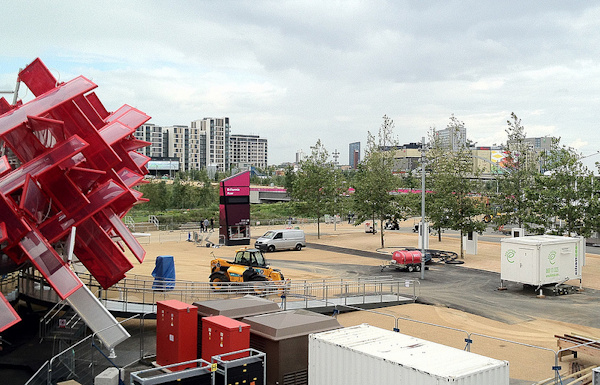

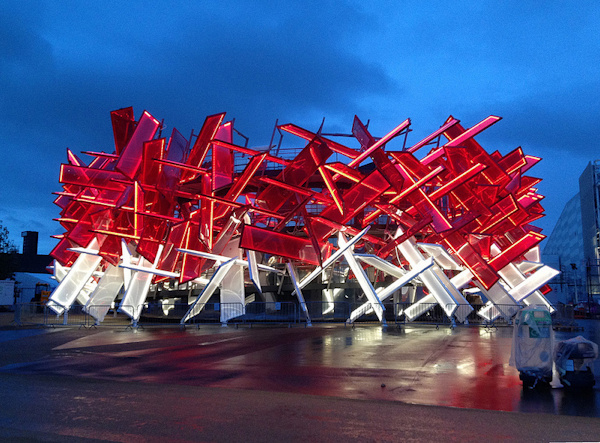
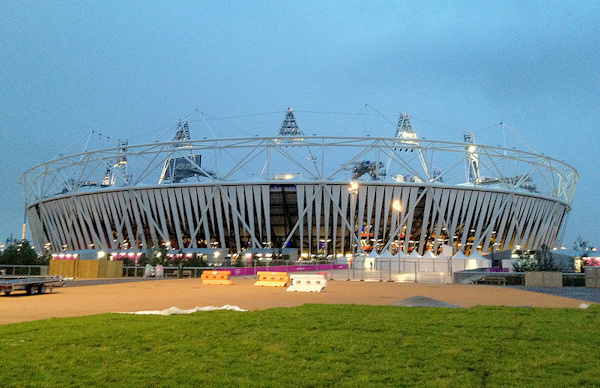
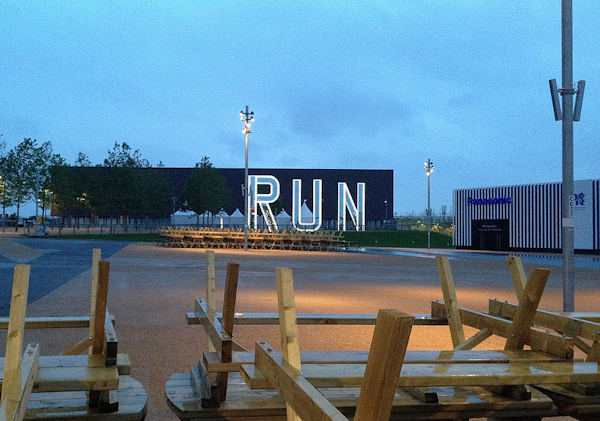
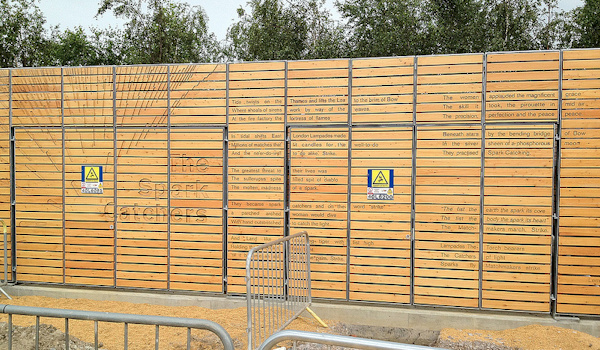
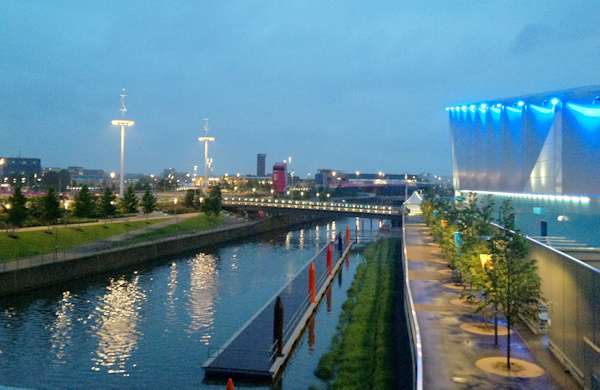



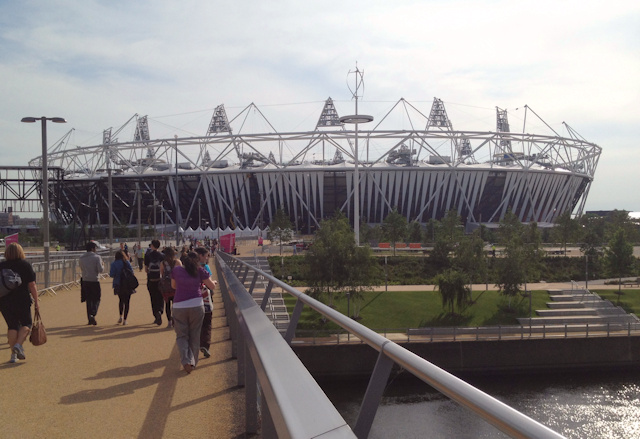





 Citigroup’s sponsorship is crucial for the scheme, which has promised no public subsidy on at least operating costs, and is a rather convenient sponsor in terms of its name. In several other cities around the world, their bike share schemes are known as City Bikes, such as
Citigroup’s sponsorship is crucial for the scheme, which has promised no public subsidy on at least operating costs, and is a rather convenient sponsor in terms of its name. In several other cities around the world, their bike share schemes are known as City Bikes, such as 

 Unconferences have no set speaker schedule, but instead participants put a post-it note with their talk title on a grid of times and rooms, and everyone looks at the grid to determine what to go to next. The plan had been to present early on the Saturday and then just relax and enjoy the rest of the meeting, but the Saturday grid was very quickly full, and it wasn’t until Sunday lunchtime that I was able to squeeze in my talk. Although 26 minutes of my 30 minute slot was spent on CityDashboard, most of the tweeted photos were of PigeonSim (that I squeezed in the last four minutes) and my attempts at demonstrating the flying gestures…
Unconferences have no set speaker schedule, but instead participants put a post-it note with their talk title on a grid of times and rooms, and everyone looks at the grid to determine what to go to next. The plan had been to present early on the Saturday and then just relax and enjoy the rest of the meeting, but the Saturday grid was very quickly full, and it wasn’t until Sunday lunchtime that I was able to squeeze in my talk. Although 26 minutes of my 30 minute slot was spent on CityDashboard, most of the tweeted photos were of PigeonSim (that I squeezed in the last four minutes) and my attempts at demonstrating the flying gestures…